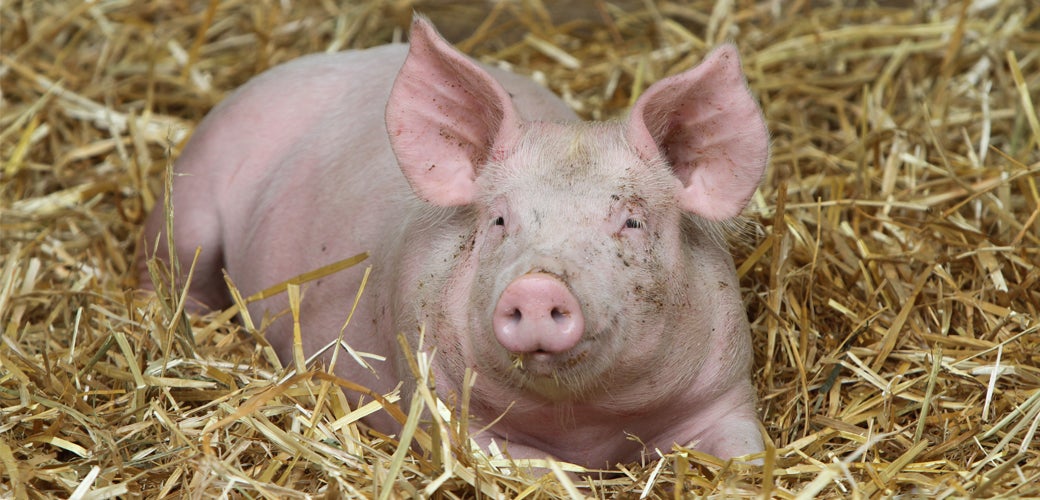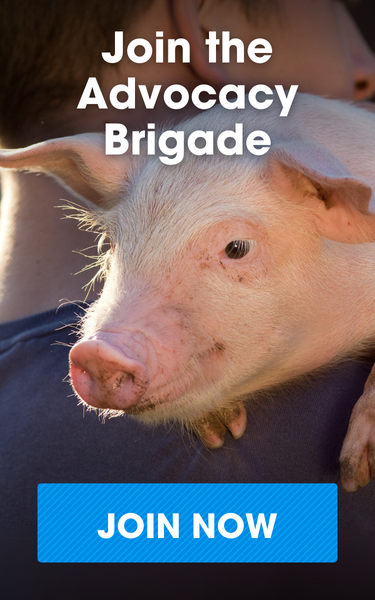
New Rules for Farm Animals: How Is USDA Organic Changing?

You might have seen the news that USDA Organic—known by many consumers for its round, green-and-white logo—recently upgraded some of its animal-welfare standards for farms participating in the program. Effective January 2, 2024, the new Organic Livestock and Poultry Standards (OLPS) Rule reflects the long and hard work of countless animal advocates and higher-welfare farmers, finally improving USDA Organic’s requirements for raising animals and bringing the significance of the program more in line with consumer expectations. But what exactly was achieved, and what does this mean for animals and consumers who shop for organic products?
Though the new standards don’t achieve everything we hoped to see in the final rule, this is a major victory, including the following critical wins:
New indoor and outdoor space requirements for broiler chickens and egg laying-hens.
Chickens and laying hens certified by USDA Organic will no longer be crowded together without room to move freely or engage in natural behaviors. It also ensures outdoor spaces are large enough for birds to use them daily. However, these standards won’t go into effect until 2029, so concerned consumers will still want to choose chicken and egg products with a meaningful animal welfare certification.
New standards for meaningful outdoor access, including a prohibition on the use of concrete “porches,” and soil and vegetation requirements.
This prohibition on the use of porches is a huge win. Companies could previously get away with giving birds access to small, enclosed, concrete porches and calling that “outdoor access.” The new standards ensure that chickens and egg-laying hens have access to outdoor space that has soil and plants so they can dustbathe and peck to their hearts’ content! Like the space requirements, these standards won’t go into effect until 2029, so concerned consumers will again want to choose chicken and eggs with a meaningful animal welfare certification.
A prohibition on the use of gestation and farrowing crates for mother pigs.
Organic farms can no longer confine mother pigs in small crates during their pregnancies (gestation crates) or when they’re nursing their piglets (farrowing crates). Millions of pigs currently suffer in these barren metal crates on factory farms, confined so tightly that they can’t even turn around.
Limits on certain painful mutilations like tail-docking and teeth-clipping.
Newly forbidden mutilations include cutting off the tails of cows, debeaking birds and face-branding cows. The rule also limits when and how other alterations can be done, like beak-trimming for birds and teeth-clipping and tail-docking for pigs.
New environmental enrichment requirements, such as rooting materials for pigs and dustbathing opportunities and perches for chickens.
Starting in 2025, organic farmers must provide rooting materials for pigs and perches and dustbathing opportunities for chickens, including enrichments that encourage the animals to go outside and use the natural enrichment provided by soil and vegetation. The ability to carry out their natural behaviors is critical to providing better lives for farm animals.
Most of the new welfare standards in the OLPS rule must be met by January 2, 2025, providing existing USDA Organic producers one year to come into compliance. However, the indoor and outdoor space requirements and outdoor soil and vegetation requirements for broiler chickens and egg-laying hens have a longer, five-year compliance period, meaning USDA Organic chicken and egg producers will be required to meet the new standards by January 2, 2029. This five-year compliance period is longer than we pushed for, and unfortunately means that chickens and egg-laying hens, who make up the vast majority of animals in organic production, will be without critical enrichments and meaningful outdoor access for years to come.
What does the OLPS rule mean for consumers?
Surveys have consistently shown that many consumers purchase—and knowingly pay a premium for—USDA Organic animal products. They do this based on the expectation that animals raised on USDA Organic farms are provided meaningful outdoor access and higher-welfare environments. However, this hasn’t been the case for many years. Because of the program’s previously vague welfare standards, industrial facilities with factory farm-like conditions were still able to earn USDA Organic certification and display the well-known logo on their products.
Unfortunately, the most egregious of these vague standards will not be eliminated until 2029, when the indoor and outdoor space requirements come into effect for chickens and egg-laying hens. Additionally, certain critical standards, such as indoor and outdoor spaces requirements for pigs and turkeys, are absent from the OLPS Rule altogether.
To help consumers better understand how the USDA Organic program compares to the requirements of meaningful animal-welfare certifications, the ASPCA will be updating our label guides to reflect the species-specific requirements for the 2025 and 2029 compliance deadlines. Make sure you’re the first to get this new resource by joining our Factory Farming Task Force!

